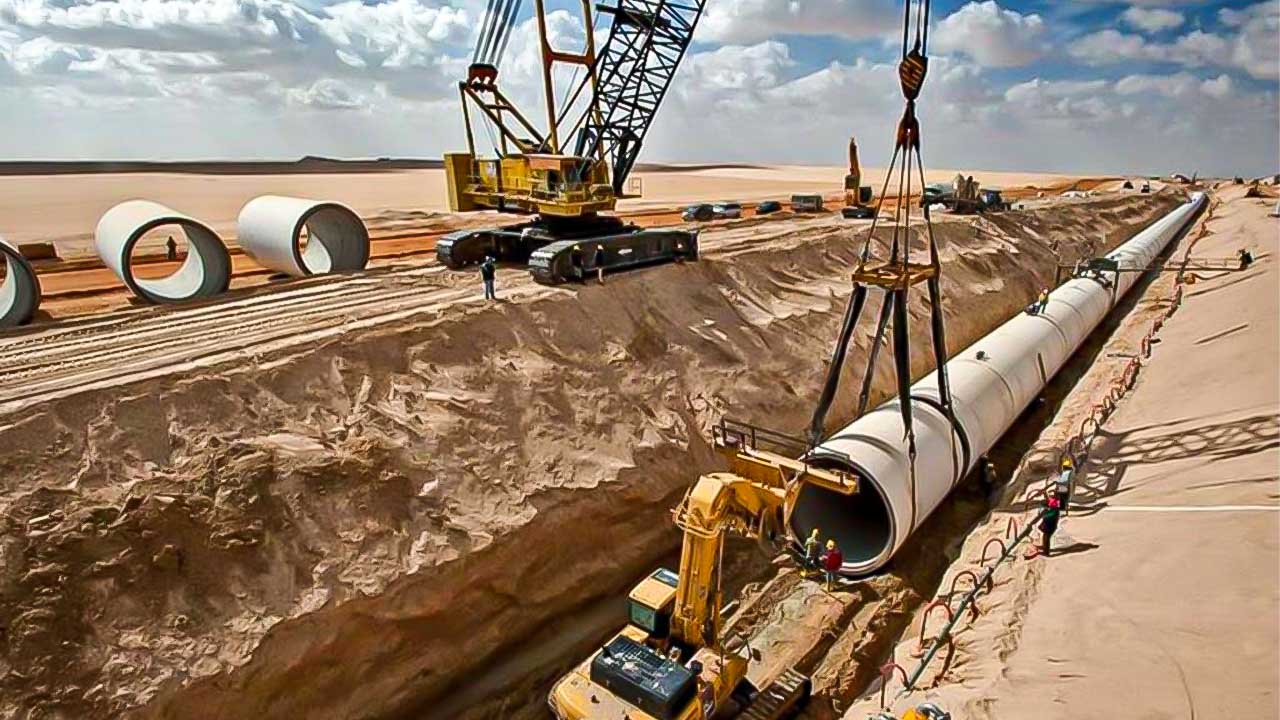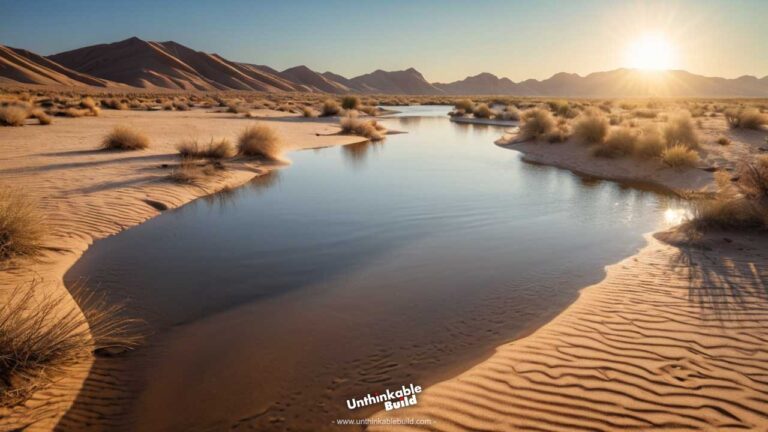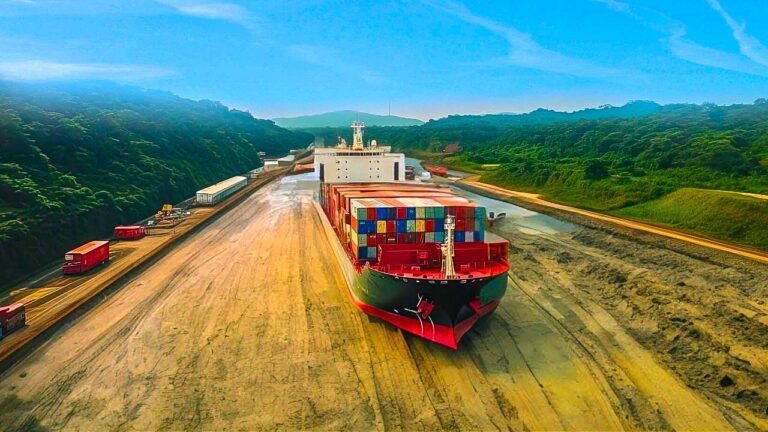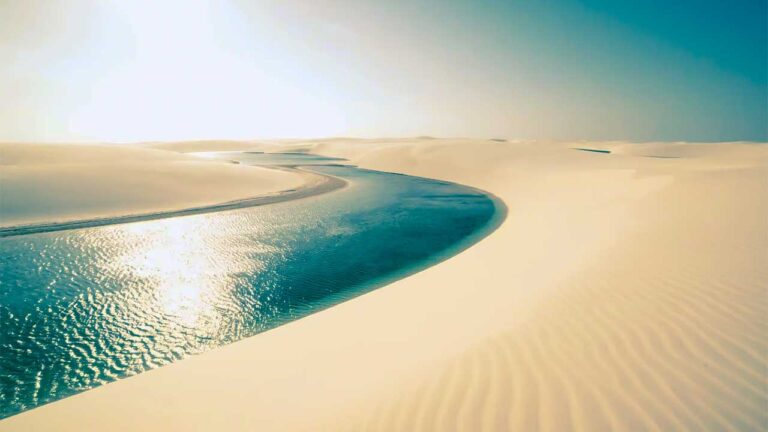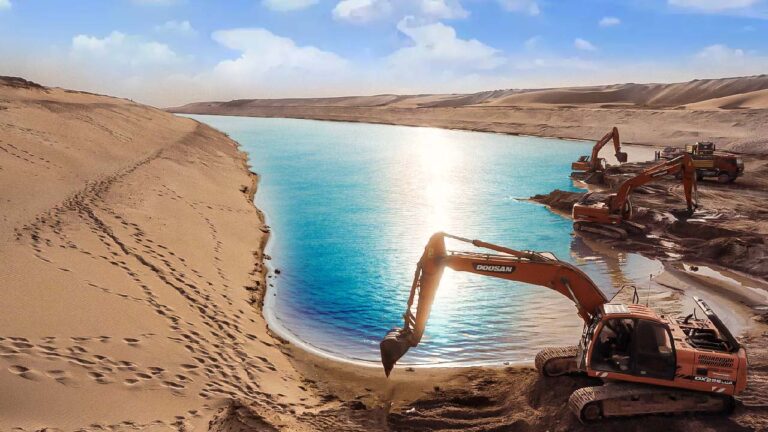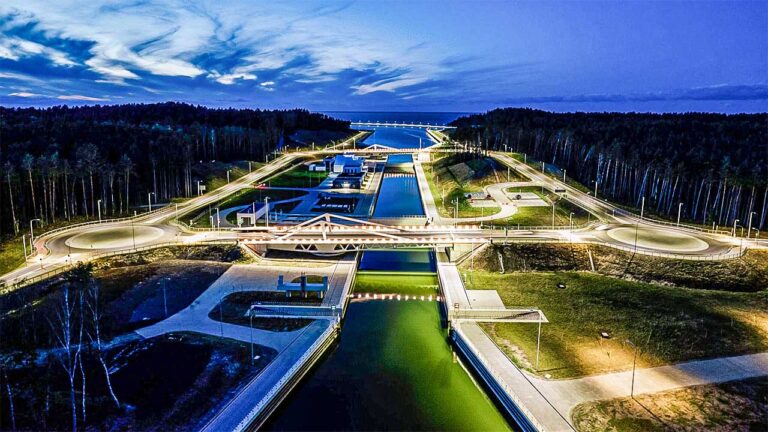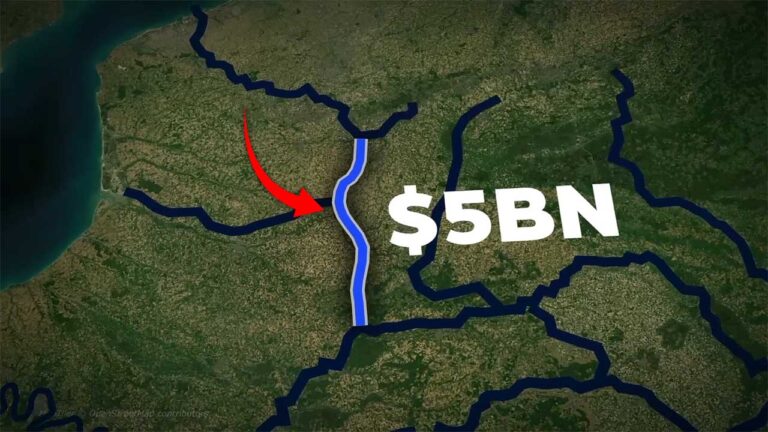Inside of Libya’s Great Man Made River
When thoughts wander into the realm of deserts, the mind conjures visions of shifting sands, a realm stripped bare of verdant life, where water is but a distant dream amidst an expanse of unfathomable vastness. Picture the Sahara, a titan spanning 9.2 million square kilometers across North Africa, reigning supreme as the planet’s most expansive hot desert. Here, temperatures soar relentlessly, fluctuating between scorching 40-47 degrees Celsius, rendering even the notion of existence a challenge against the relentless elements.
In the vast expanse of this sprawling desert, stretching its arms over ten nations, Libya holds a unique position. It stands alone among African countries, devoid of a natural river to quench its thirst for fresh water.
Moreover, in most regions of Libya, rainfall is a rare occurrence, spanning not just months but often decades. Approximately 90% of the population resides in the northern coastal cities such as Benghazi, Misrata, Tripoli, and Zawiya, where the Mediterranean shores offer a haven from the parched interior.
On December 24, 1951, Libya marked its independence as the United Kingdom of Libya, establishing a constitutional and hereditary monarchy under the rule of King Idris, the sole sovereign of the land. The turning point came in 1956 with the groundbreaking discovery of significant oil deposits in Libya’s historically turbulent central region. The ensuing revenue from petroleum sales swiftly propelled the nation from the ranks of the world’s poorest to the status of a super-rich state. Boasting the largest crude oil reserves in Africa and ranking 10th globally, Libya’s economic landscape underwent a seismic shift. This newfound prosperity sparked a population surge, with numbers doubling by 1976 and continuing to soar well into 1996.
As Libya’s population swelled, so did its struggle with a looming water crisis. With no natural rivers and meager rainfall to rely on, the nation faced a dire need for strategic planning to address this essential requirement. Yet, amidst these challenges, a remarkable discovery unfolded in 1953 during the frenzied pursuit of oil: buried deep within the southeastern region of Al-Kufra lay a treasure trove, a revelation that reverberated across the globe, defying expectations and capturing the world’s attention.
As Libya’s population burgeoned, so too did its grappling with a severe water crisis. With natural rivers scarce and rainfall minimal, the nation faced a critical need for strategic planning to address this essential requirement. Meanwhile, amidst the fervent quest for oil in the Sahara in 1953, a remarkable discovery unfolded in the southeastern region of Al-Kufra, astonishing the world. Here lay vast reservoirs of fossil water, spanning from 10,000 to 1,000,000 years old, concealed at depths of 2,000 meters. These underground aquifers, extending over 2.6 million square kilometers, marked the largest known reserves globally. Recognizing the potential, the Libyan government envisioned utilizing this water resource to bolster agriculture, domestic use and industrial sectors, thereby reducing reliance on imported goods to fulfill food demands. However, the challenge lay in transporting this precious resource across the world’s largest hot desert to reach the populace and arable lands.
Also Read: Why China is a Home for Ghost Towns
From the sands of the Sahara emerged a visionary endeavor, born from an accidental discovery near the Egyptian border. It heralded the inception of the world’s most ambitious undertaking: the grandeur of the largest man-made river project. This marvel, unquestionably deserving of the title “the eighth wonder of the world,” promised to transform the arid landscape into a flourishing oasis, rewriting the narrative of possibility on a monumental scale.
This unparalleled engineering marvel destined to channel water from expansive aquifers to the parched northern coastal belt. Its mission is to quench the thirst of the nation’s 5.6 million people and nourish the earth for bountiful harvests.
Conceived amidst the shifting sands of the late 1960s, the project’s inception saw the light of day in 1974 with the commencement of initial feasibility studies.
In a remarkable display of self-reliance, Libya embarked on this monumental endeavor without significant international backing or loans from global financial institutions. With the total cost soaring beyond $25 billion, this colossal investment stands as a testament to Libya’s unwavering determination and resolve.
Born of vision and necessity, the project broke ground in 1984, heralding the dawn of an engineering marvel unparalleled in scale. Its mission was to harness the fossil waters of the Nubian Sandstone Aquifer System and deliver them to the thirsty mouths and fertile lands of the nation’s northern coast.
Like chapters in an epic tale, the project unfolded in five phases, each a testament to human ingenuity and perseverance. The inaugural phase, completed in 1991, marked a triumph of excavation, while the second phase, “First water to Tripoli,” brought relief and hope to the capital city in 1996.
Under the watchful eye of the Great Man-Made River Project Authority and funded by the visionary Gaddafi government, the project drew upon global expertise. From the distant shores of Korea and Europe came imported goods, while Australia’s AMAC Corrosion Protection lent its shield against the desert’s harsh embrace.
Beneath the desert’s surface lies a hidden treasure: more than 1,300 wells, some plunging deeper than 500 meters, tap into ancient aquifers. Here, in the depths of the fossil aquifer, lies the lifeblood of Libya. Each day, the Great Man-Made River surges forth, delivering an astonishing 6.5 million cubic meters of precious water to quench the thirst of Libyan communities.
Across the rugged expanse of Libya, a lifeline stretches, an engineering marvel defying the vastness of the desert. Extending over a staggering 1,600 kilometers, this pipeline weaves its way through the arid landscape, linking cities like Tripoli, Benghazi, and Sirte in an intricate network.
During Phase I of the project, an impressive 250,000 sections of pipe were laid, boasting dimensions that were considered unrivaled at the time. Each section stood at a towering 4 meters in diameter and stretched to a remarkable length of 7 meters. Crafted within Libya’s borders, these pipes were meticulously constructed from layers of steel-reinforced pre-stressed concrete. Specialized cranes delicately lowered these sections into trenches that delved 7 meters deep, while bulldozers skillfully nudged them into position. Once in place, the joints were meticulously sealed using colossal rubber O-rings and cement grout, before the trenches were neatly filled in.
Also Read: Why Russia Is Not Happy with Europe’s Vistula Spit Canal
The distribution nodes, such as the one in Ajdabiya, housed open reservoirs that resembled artificial lakes, meticulously excavated from the soil and rock, and lined with resilient asphalt. The grandest reservoir, spanning over 1 kilometer in diameter, possessed the capacity to hold an astonishing 24 million cubic meters of water. This monumental undertaking attracted the expertise of numerous engineering companies from across the globe, all eager to contribute to the success of the Great Man-Made River project.
Yet, amidst the grandeur, tragedy struck. In the crucible of conflict during the First Libyan Civil War, NATO airstrikes laid waste to the Brega Plant, casting doubt upon the project’s future. The Second Libyan Civil War further strained the project, as neglect and breakdowns threatened its integrity.
And on a fateful day in April 2020, an unknown armed group seized control of a vital water station, plunging millions into darkness and despair.
This monumental project, hailed as the Great Man-Made River, is more than just a conduit for water—it’s a lifeline for millions. Providing a stable water supply, it sustains the livelihoods of countless Libyans, covering a staggering 70% of the country’s freshwater needs.
Yet, amid the triumph of human ingenuity, questions linger. The extraction of fossil water from ancient aquifers raises ecological concerns, casting shadows over the project’s sustainability.
Certain Libyan authorities, buoyed by the immense expanse of the subterranean reservoirs, have boldly asserted that these reservoirs possess the capability to provide water for millennia to come. However, critics vehemently oppose such assertions, contending that they are grossly exaggerated; some even go so far as to suggest that the Great Man-Made River may not endure beyond the 21st century. The Nubian Sandstone Aquifer System, an ancient repository of fossil water, lacks the ability to recharge, rendering its water stores finite. Consequently, should these subterranean water supplies be exhausted, the region would confront dire water scarcity unless substantial desalination infrastructure is established.
Nevertheless, the Great Man-Made River Project stands as a testament to human perseverance and innovation. It defies the harsh realities of the desert, nourishing the land and its people. As water courses through its subterranean arteries, it not only sustains crops but also nurtures dreams, leaving an indelible imprint on the fabric of Libya’s history.

